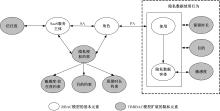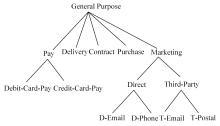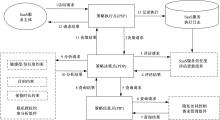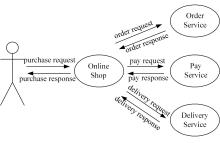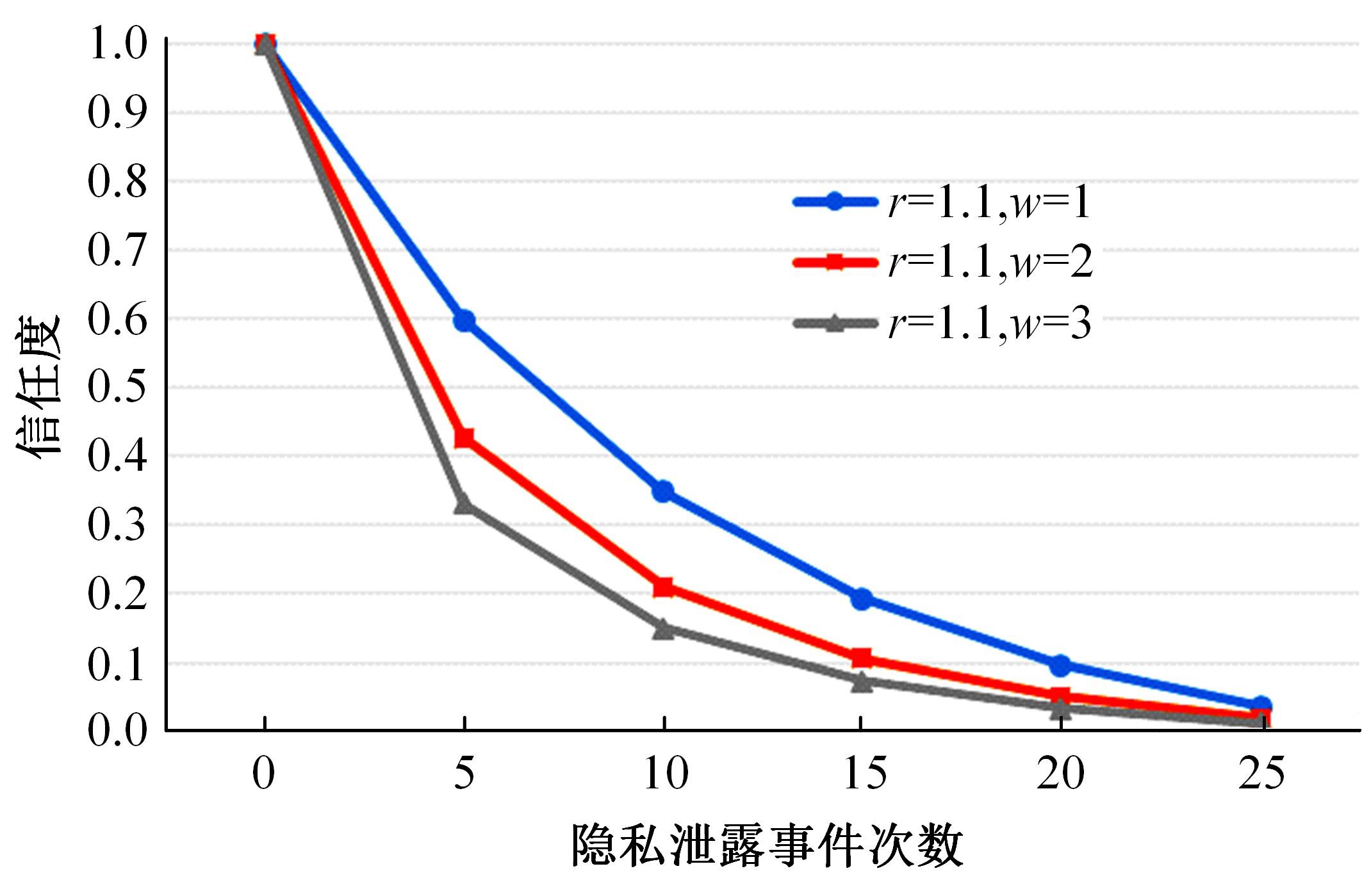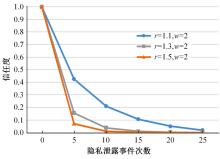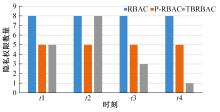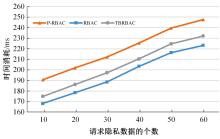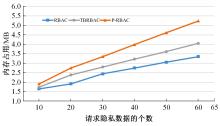Journal of Jilin University(Engineering and Technology Edition) ›› 2023, Vol. 53 ›› Issue (10): 2897-2908.doi: 10.13229/j.cnki.jdxbgxb.20211336
Previous Articles Next Articles
Adaptive access control method for SaaS privacy protection
Da-juan FAN1,2( ),Zhi-qiu HUANG2,Yan CAO2
),Zhi-qiu HUANG2,Yan CAO2
- 1.School of Computer Engineering,Nanjing Institute of Technology,Nanjing 211167,China
2.College of Computer Science and Technology,Nanjing University of Aeronautics and Astronautics,Nanjing 210016,China
CLC Number:
- TP311
| 1 | Stephanie V, Chamikara M, Khalil I, et al. Privacy-preserving location data stream clustering on mobile edge computing and cloud[J]. Information Systems, 2021, 10(2): 17-28. |
| 2 | Iyengar R, Zoom Fung B., the video conferencing app everyone is using, faces questions over privacy[EB/OL]. [2020-04-01]. . |
| 3 | Sun P. Research on adaptive relationship between trust and privacy in cloud service[J]. IEEE Access, 2021, 9: 43214-43227. |
| 4 | 彭焕峰, 黄志球, 范大娟, 等. 面向服务组合的用户隐私需求规约与验证方法[J]. 软件学报, 2016, 27(8): 1948-1963. |
| Peng Huan-feng, Huang Zhi-qiu, Fan Da-juan, et al. Specification and verification of user privacy requirements for web service composition[J]. Journal of Software, 2016, 27(8): 1948-1963. | |
| 5 | Ding W, Hu R, Yan Z, et al. An extended framework of privacy-preserving computation with flexible access control[J]. IEEE Transactions on Network and Service Management, 2020, 17(2): 918-930. |
| 6 | Qun N, Bertino I E, Lobo J, et al. Privacy-aware role-based access control[J]. ACM Transactions on Information & System Security, 2010, 13(3): 1-31. |
| 7 | Wang H, Sun L L, Bertino E. Building access control policy model for privacy preserving and testing policy conflicting problems[J]. Journal of Computer & System Sciences, 2014, 80(8): 1493-1503. |
| 8 | Omoronyia I. Privacy engineering in dynamic settings[C]∥Proc of IEEE/ACM International Conference on Software Engineering Companion, Washington, USA, 2017: 297-299. |
| 9 | Sun P. Research on cloud computing service based on trust access control[J]. International Journal of Engineering Business Management, 2020, 12: 1-13. |
| 10 | 余波, 台宪青, 马治杰. 云计算环境下基于属性和信任的RBAC模型研究[J]. 计算机工程与应用, 2020, 56(9): 84-92. |
| Yu Bo, Tai Xian-qing, Ma Zhi-jie. Study on attribute and trust-based RBAC model in cloud computing[J]. Computer Engineering and Applications, 2020, 56(9): 84-92. | |
| 11 | Kolter J, Netter M, Pernul G. Visualizing past personal data disclosures[C]∥Proceedings of IEEE International Conference on Availability, Reliability, and Security, Krakow, Poland, 2010: 131-139. |
| 12 | Jiang J X, Huang Z Q, Ma W W, et al. Using information flow analysis to detect implicit information leaks for web service composition[J]. Frontiers of Information Technology & Electronic Engineering, 2018, 19(4): 494-502. |
| 13 | Pitsiladis G V, Stefaneas P. Implementation of privacy calculus and its type checking in Maude[C]∥Proc of the 8th International Symposium on Leveraging Applications of Formal Methods, Verification and Validation, Limassol, Cyprus, 2018: 477-493. |
| 14 | Costante E, Paci F, Zannone N. Privacy-aware web service composition and ranking[C]∥Proc of the 20th IEEE International Conference on Web Services, Salt Lake City, USA, 2013: 131-138. |
| 15 | Ke C B, Xiao F, Huang Z Q . et al. Ontology-based privacy data chain disclosure discovery method for big data[J]. IEEE Transactions on Services Computing,2022,15(1): 59-68. |
| 16 | Accorsi R, Lehmann A, Lohmann N. Information leak detection in business process models[J]. Theory, Application, and Tool Support: Information Systems, 2015, 47: 244-257. |
| 17 | Ding H F, Peng C G, Tian Y L, et al. Privacy risk adaptive access control model via evolutionary game[J]. Journal on Communications, 2019, 40(12): 9-20. |
| 18 | Amardeep K, Amandeep V. An abstract model for adaptive access control in cloud computing[C]∥Proc of International Conference on Recent Advancement on Computer and Communication, Andhra Pradesh, India, 2018: 269-277. |
| [1] | Liu ZHANG,Qing-ming ZENG,Huan-yu ZHAO,Guo-wei FAN. Distributed adaptive vibration suppression control method of large solar panels for satellites based on Lyapunov theory [J]. Journal of Jilin University(Engineering and Technology Edition), 2023, 53(9): 2676-2685. |
| [2] | Ya-jing YU,Jian GUO,Rong-hao WANG,Wei QIN,Ming-wu SONG,Zheng-rong XIANG. Time⁃varying formation control of multi⁃quadrotor unmanned aerial vehicles based on state observer [J]. Journal of Jilin University(Engineering and Technology Edition), 2023, 53(3): 871-882. |
| [3] | Min FAN,Shi-jun SONG. Intelligent recognition model of image features based on multi⁃source big data analysis [J]. Journal of Jilin University(Engineering and Technology Edition), 2023, 53(2): 555-561. |
| [4] | Jian WU,Bin XU. Displacement interval prediction model and simulation of accumulation landslide based on ceemdan theory [J]. Journal of Jilin University(Engineering and Technology Edition), 2023, 53(2): 562-568. |
| [5] | Min MA,Da-wei HU,Lan SHU,Zhuang-lin MA. Resilience assessment and recovery strategy on urban rail transit network [J]. Journal of Jilin University(Engineering and Technology Edition), 2023, 53(2): 396-404. |
| [6] | Li-li BAI,Feng-guo JIANG,Yu-ming ZHOU,Xiao ZENG. Optimized design of structure reliability based on improved whale algorithm [J]. Journal of Jilin University(Engineering and Technology Edition), 2023, 53(11): 3160-3165. |
| [7] | Di WU,Ming HE. Video SAR moving target detection method based on machine vision [J]. Journal of Jilin University(Engineering and Technology Edition), 2023, 53(11): 3214-3220. |
| [8] | Yong-gang CHEN,Ji-ye XU,Hai-yong WANG,Wen-xiang XIONG. Fault diagnosis method of point machine based on adaptive neural fuzzy inference network system [J]. Journal of Jilin University(Engineering and Technology Edition), 2023, 53(11): 3274-3280. |
| [9] | Rui-shan DU,Yu-xin CHEN,Ling-dong MENG. Trusted cloud computing platform poly source big data time sequence scheduling algorithm [J]. Journal of Jilin University(Engineering and Technology Edition), 2023, 53(11): 3194-3200. |
| [10] | Li-yan DONG,Wei-ye LIANG,Yue-qun WANG,Yong-li LI. Global potential information combined graph neural networks for session-based recommendation [J]. Journal of Jilin University(Engineering and Technology Edition), 2023, 53(10): 2964-2972. |
| [11] | Yan-yan QIN,Xiao-qing YANG,Hao WANG. Impacts of CO2 emissions and improving method for connected and automated mixed traffic flow [J]. Journal of Jilin University(Engineering and Technology Edition), 2023, 53(1): 150-158. |
| [12] | Yong-ming LI,Xiao-xuan PEI,Shu-dong YI. Adaptive neural network optimal control of hybrid electric vehicle power battery [J]. Journal of Jilin University(Engineering and Technology Edition), 2022, 52(9): 2063-2068. |
| [13] | Chong ZHANG,Yun-feng HU,Xun GONG,Yao SUN. Design of model⁃free adaptive sliding mode controller for cathode flow of fuel cell [J]. Journal of Jilin University(Engineering and Technology Edition), 2022, 52(9): 2085-2095. |
| [14] | Yan LIU,Tian-wei DING,Yu-peng WANG,Jing DU,Hong-hui ZHAO. Thermal management strategy of fuel cell engine based on adaptive control strategy [J]. Journal of Jilin University(Engineering and Technology Edition), 2022, 52(9): 2168-2174. |
| [15] | Guang-ming NIE,Bo XIE,Yan-tao TIAN. Design of cooperative adaptive cruise control algorithm based on Frenet framework [J]. Journal of Jilin University(Engineering and Technology Edition), 2022, 52(7): 1687-1695. |
|
||
